I’ve been a long-time proponent of podcasting in education and I shared back in 2012 how to create a course podcast using Dropbox. The process I shared at that time, while free and workable, was still a bit cumbersome a presented a few minor technical hurdles that faculty needed to overcome in order when implementing. I recently learned of a new tool, JustCast, that removes the previous technical hurdles and makes podcasting using Dropbox super simple!
This 2-minute tutorial demonstrates how easy it is to create a podcast using Dropbox:
I decided to give JustCast a try myself. Below are the steps I took to setup a course podcast for my summer course, ETT 511: Advanced Instructional Media Design, in less than 5 minutes! Before following my steps below, you’ll need to first have a Dropbox account, which you can sign-up for free at dropbox.com.
Step 1: Sign-up for a Free Account
After I viewing the tutorial at justcast.herokuapp.com, I signed-up for a free account. In a matter of just a couple of clicks, I had approved the JustCast app in my Dropbox account. After logging in, my JustCast Shows page looked like this:
Step 2: Edit “example” Dropbox Folder Name
As part of the JustCast install process, it creates a folder called “justcast” in your “Apps” folder in your Dropbox folder. Within that “justcast” folder will be a subfolder called “example” that is meant to be the placeholder for your first podcast. I renamed that folder to the name of my course podcast, “ETT 511 – Summer 2014” so it appeared as follows:
Step 3: Place .mp3 File in Podcast Folder
With my course podcast folder renamed to “ETT 511 – Summer 2014” I then simply dragged and dropped the .mp3 file for my first podcast episode into that folder within Dropbox on my computer, which then sync’d with my Dropbox in the cloud. Once sync’d, I could see that the audio file for my first episode was within my Dropbox/Apps/justcast/ETT 511 – Summer 2014/ folder
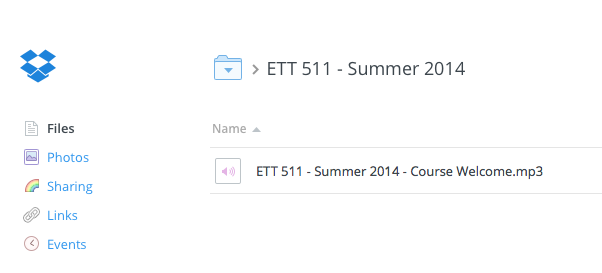
For each new episode to be added in the future, the new .mp3 file will simply need to be added to this folder.
Step 4: Edit Podcast Details
I then went ahead and edited my podcast show details in JustCast. Clicking the “Edit” button I added the following show details and attached a square graphic to be used as the thumbnail artwork for the podcast.
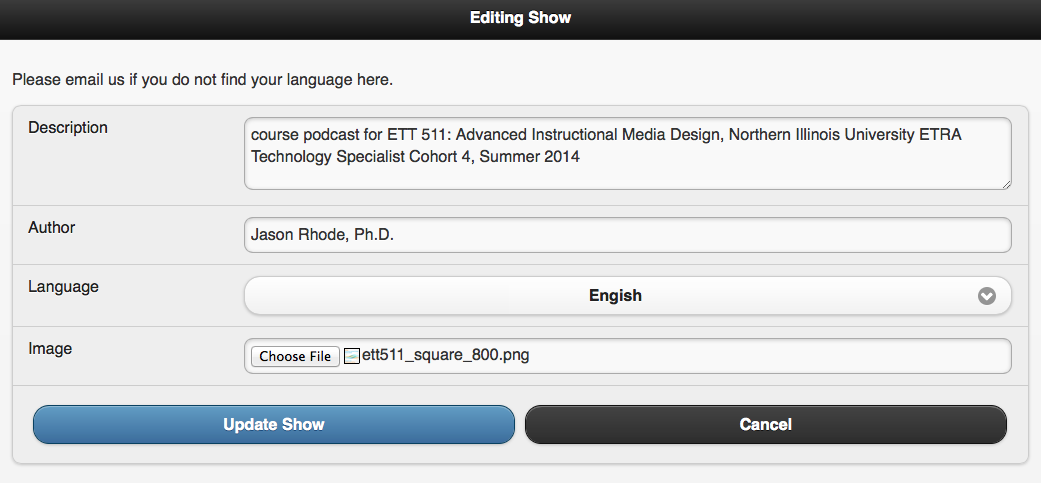
After saving the edited show info, the podcast appeared in my list of shows as follows:
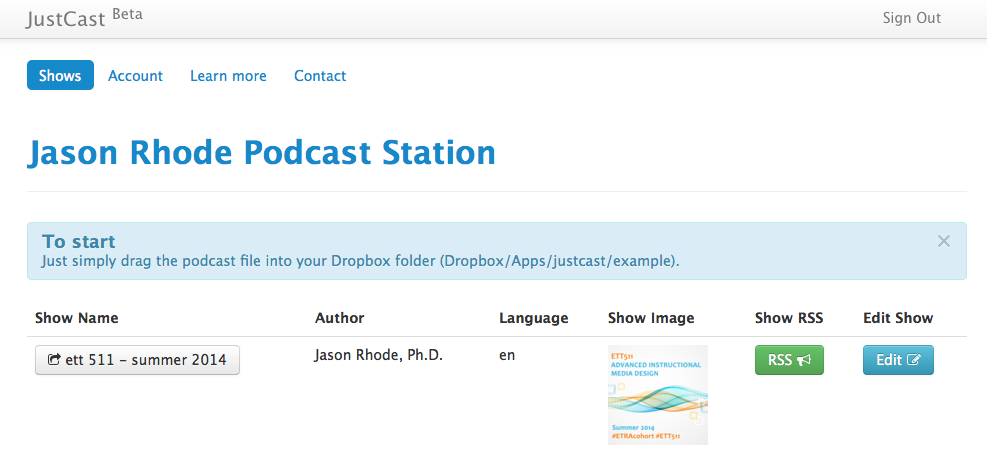
Step 5: Share Podcast RSS URL
The final step was to click the “RSS” button for my show to get the RSS feed for my course podcast, which is http://justcast.herokuapp.com/shows/371/audioposts.rss
Students can copy/paste this URL into their own podcast app of choice, such as Downcast, Instacast, Apple’s Podcast app, or others to subscribe and be able to easily download & access all future course podcast episodes directly from their mobile device.
I’ve been very impressed thus far with JustCast, even though it is currently just beta. I plan to continue using it for my course podcast this summer and I’d encourage other educators looking for a simple and free podcasting solution to give it a try! The free plan currently limits to 100mb of uploading per month, with an unlimited monthly upload option for just $5/mo.
Have you tried JustCast and/or found these steps helpful? What has been your experience thus far with podcasting using Dropbox and JustCast? Leave a comment with your thoughts!
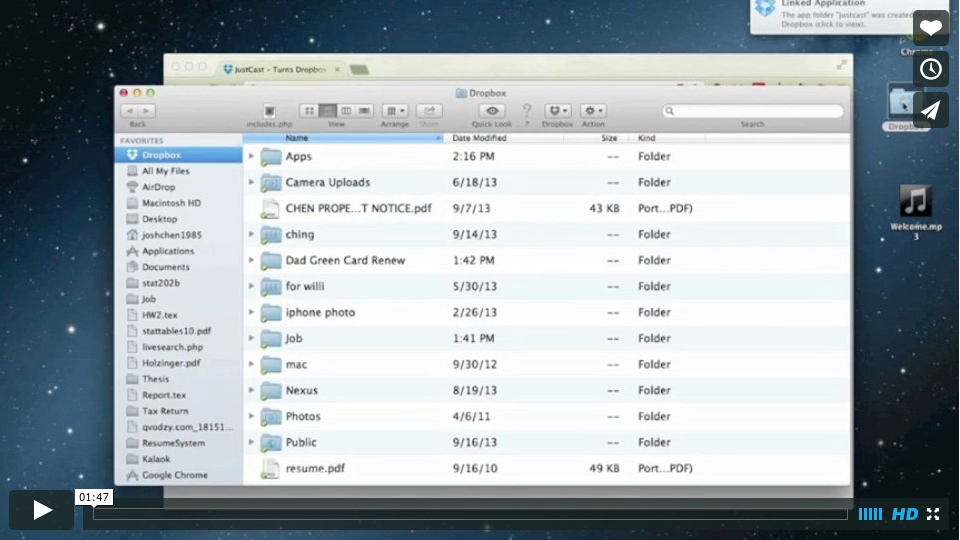
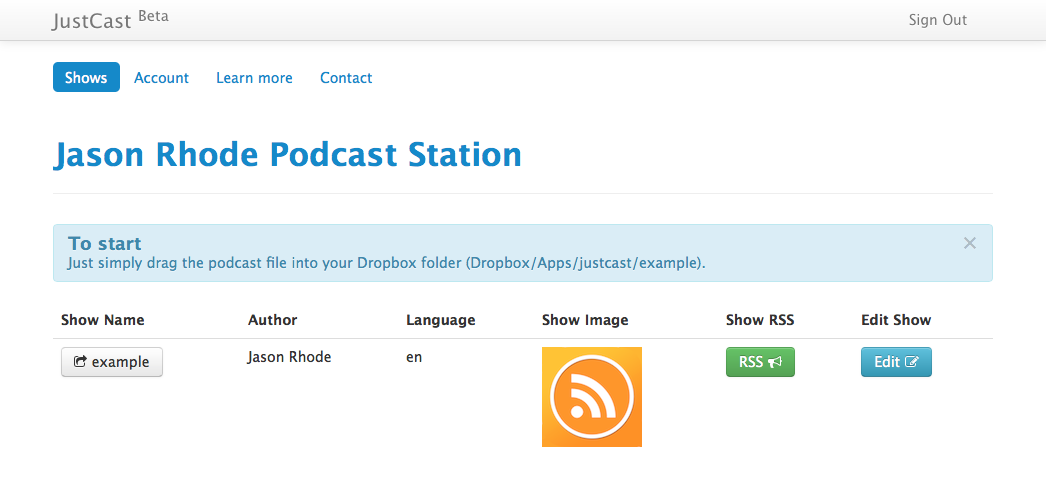
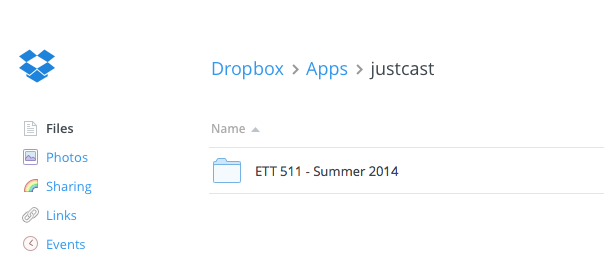
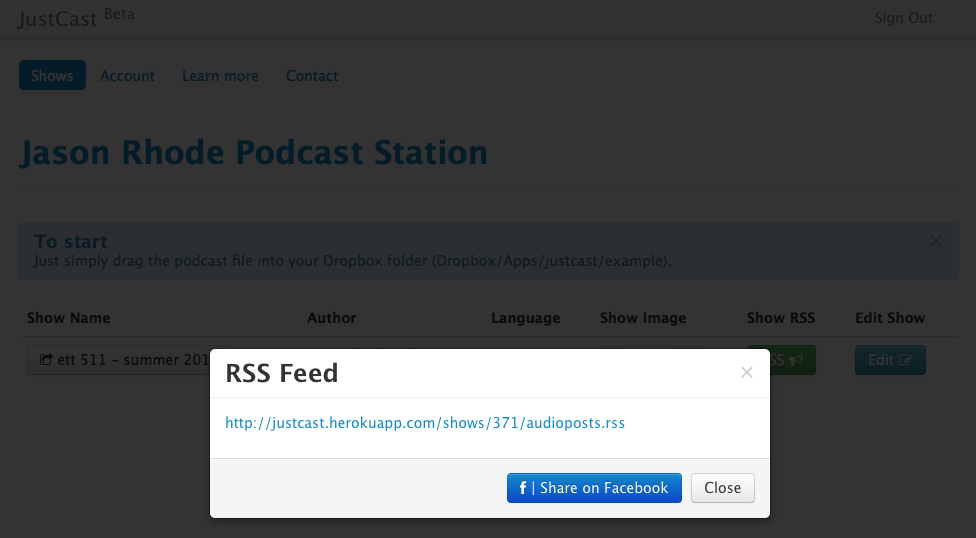

 “
“
